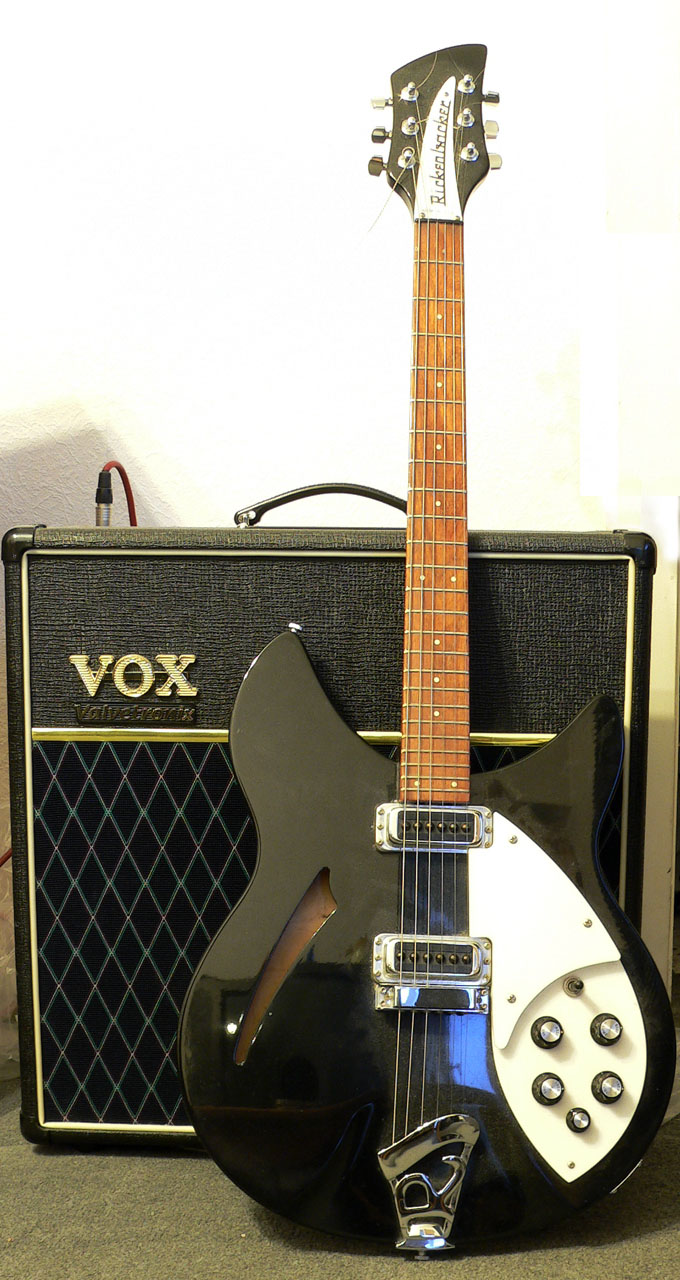|
Our Favourite Shop
''Our Favourite Shop'' is the second studio album by the English group the Style Council. It was released on 8 June 1985, on Polydor, and was recorded ten months after the band's debut ''Café Bleu''. It features guest vocalists, including Lenny Henry, Tracie Young, and Dee C Lee. The album contained " Come to Milton Keynes", " The Lodgers", " Boy Who Cried Wolf", and " Walls Come Tumbling Down!" which were all released as singles, with corresponding music videos. The three singles that were released in the UK all reached the top 40 on the UK charts. The album was released as ''Internationalists'' in the United States, with a reconfigured track listing. Style Council's most commercially successful album, it was an immediate commercial and critical success, and remained at the top of the charts for one week, displacing '' Brothers in Arms'' by Dire Straits. The album was the Style Council's only number one album in the UK. According to the BPI, the record sold over 100,000 copie ... [...More Info...] [...Related Items...] OR: [Wikipedia] [Google] [Baidu] |
The Style Council
The Style Council were a British musical ensemble, band formed in late 1982 by Paul Weller, the former singer, songwriter and guitarist with the punk rock/New wave music, new wave/mod revival band the Jam, and keyboardist Mick Talbot, previously a member of Dexys Midnight Runners, The Bureau (band), the Bureau and the Merton Parkas. The band enabled Weller to take his music in a more soulful direction. The permanent line-up grew to include drummer Steve White (drummer), Steve White and Weller's then-girlfriend, vocalist Dee C. Lee. Other artists such as Tracie Young, Tracey Thorn (Everything but the Girl), and drummer/percussionist Steve Sidelnyk (who has played for Madonna (entertainer), Madonna, Seal (musician), Seal, Richard Ashcroft) also performed and collaborated with the group. As with Weller's previous band, most of the London-based group's hits were in their homeland, where they scored seven top 10 hits. The band also had hit singles and albums in Australia and New Zeal ... [...More Info...] [...Related Items...] OR: [Wikipedia] [Google] [Baidu] |
Boy Who Cried Wolf (song)
"Boy Who Cried Wolf" is a song by the English band The Style Council which was their twelfth single to be released. It was composed by lead singer Paul Weller, and was released in 1985. It is the fourth single from the band's second album, ''Our Favourite Shop'' (1985). Our Favourite Shop was renamed ''Internationalists'' in the United States. However, the single was not released in UK. Compilation appearances As well as the song's single release, it has only been featured on two compilation albums released by The Style Council. The song was included on ''The Complete Adventures of The Style Council ''The Complete Adventures of The Style Council'' is a box set by The Style Council, released in 1998, nine years after their split. It contains most of their material in chronological order, including their previously unreleased final studio al ...'' in 1998, and ''The Collection'' in 2001. Track listing * 12" Single (883 280–1) #"Boy Who Cried Wolf" – 3:34 #"Our Favourite Sho ... [...More Info...] [...Related Items...] OR: [Wikipedia] [Google] [Baidu] |
The Jam
The Jam were an English mod revival/ punk rock band formed in 1972 at Sheerwater Secondary School in Woking, Surrey. They released 18 consecutive Top 40 singles in the United Kingdom, from their debut in 1977 to their break-up in December 1982, including four number one hits. As of 2007, " That's Entertainment" and "Just Who Is the 5 O'Clock Hero?" remain the best-selling import singles of all time in the UK. They released one live album and six studio albums, the last of which, '' The Gift'', reached number one on the UK Albums Chart. When the group disbanded in 1982, their first 15 singles were re-released and all placed within the top 100. While the Jam shared the "angry young man" outlook and fast tempo of the mid-1970s British punk rock movement, in contrast with it the band wore smartly tailored suits reminiscent of English pop-bands in the early 1960s and incorporated mainstream 1960s rock and R&B influences into its sound, particularly from the Who's work of that perio ... [...More Info...] [...Related Items...] OR: [Wikipedia] [Google] [Baidu] |
Hope
Hope is an optimistic state of mind that is based on an expectation of positive outcomes with respect to events and circumstances in one's life or the world at large. As a verb, its definitions include: "expect with confidence" and "to cherish a desire with anticipation." Among its opposites are dejection, hopelessness, and despair. In psychology Professor of Psychology Barbara Fredrickson argues that hope comes into its own when crisis looms, opening us to new creative possibilities. Frederickson argues that with great need comes an unusually wide range of ideas, as well as such positive emotions as happiness and joy, courage, and empowerment, drawn from four different areas of one's self: from a cognitive, psychological, social, or physical perspective. Hopeful people are "like the little engine that could, ecausethey keep telling themselves "I think I can, I think I can". Such positive thinking bears fruit when based on a realistic sense of optimism, not on a naive "f ... [...More Info...] [...Related Items...] OR: [Wikipedia] [Google] [Baidu] |
Consumerism
Consumerism is a social and economic order that encourages the acquisition of goods and services in ever-increasing amounts. With the Industrial Revolution, but particularly in the 20th century, mass production led to overproduction—the supply of goods would grow beyond consumer demand, and so manufacturers turned to planned obsolescence and advertising to manipulate consumer spending. In 1899, a book on consumerism published by Thorstein Veblen, called ''The Theory of the Leisure Class'', examined the widespread values and economic institutions emerging along with the widespread "leisure time" at the beginning of the 20th century. In it, Veblen "views the activities and spending habits of this leisure class in terms of conspicuous and vicarious consumption and waste. Both relate to the display of status and not to functionality or usefulness." In economics, consumerism may refer to economic policies that emphasise consumption. In an abstract sense, it is the consideration th ... [...More Info...] [...Related Items...] OR: [Wikipedia] [Google] [Baidu] |
Steve White (drummer)
Steven Douglas White (b. 31 May 1965) is an English drummer who has worked extensively with Paul Weller and The Style Council among others. Musical career White was given a small drum as a child by his uncle and upon joining his local Boys' Brigade he began to learn his craft. As with White's bandmate Paul Weller, he was given full support from his parents who went out of their way to help their son develop. White spent his youth having lessons from the late George Scott of Wanstead and learning from recordings of Buddy Rich and Louis Bellson. White later took lessons with drumming teacher Bob Armstrong at Bob's Masterclass studio, then in Hornchurch, Essex. White complemented his work gigging with local bands with part-time work, spending any spare cash on updating his collection of jazz records. In 1983, White auditioned for an unnamed band which turned out to be Paul Weller's new group, The Style Council. Weller was impressed with the 17-year-old drummer's jazz background ... [...More Info...] [...Related Items...] OR: [Wikipedia] [Google] [Baidu] |
Mick Talbot
Michael Talbot (born 11 September 1958) is an English keyboardist. In a career spanning more than 40 years, Talbot is probably best known as co-founder of the Style Council. He has been a member of Dexys Midnight Runners, the Merton Parkas and the Bureau. Career Style Council In 1982, he started working with Paul Weller to form the Style Council, who released their first records in early 1983. Since the break-up of the Style Council in March 1990, Talbot has continued to play with Weller on his solo material. He has also released albums with fellow former Style Council member Steve White, under the name Talbot/White. He has since begun playing alongside former Style Council bandmate White and former Ocean Colour Scene bass guitar player Damon Minchella, in the jazz/funk band the Players. Other work and collaborations Talbot played with late-1970s mod revivalists the Merton Parkas, Dexys Midnight Runners and the Bureau and can be seen in The Bureau's music video for ... [...More Info...] [...Related Items...] OR: [Wikipedia] [Google] [Baidu] |
Mojo (magazine)
''Mojo'' is a popular music music magazine, magazine published monthly in the United Kingdom, initially by Ascential, Emap, and since January 2008 by Bauer Verlagsgruppe, Bauer. Following the success of the magazine ''Q (magazine), Q'', publishers Emap were looking for a title that would cater for the burgeoning interest in classic rock music. The magazine was designed to appeal to the 30 to 45-plus age group, or the baby boomer generation. ''Mojo'' was first published on 15 October 1993. In keeping with its classic rock aesthetic, the first issue had Bob Dylan and John Lennon as its first cover stars. Noted for its in-depth coverage of both popular and cult acts, it acted as the inspiration for ''Blender (magazine), Blender'' and ''Uncut (magazine), Uncut''. Many noted music critics have written for it, including Charles Shaar Murray, Greil Marcus, Nick Kent, Jon Savage and Sylvie Simmons. The launch editor of ''Mojo'' was Paul Du Noyer and his successors have included Mat Snow, P ... [...More Info...] [...Related Items...] OR: [Wikipedia] [Google] [Baidu] |
Simon Halfon
Simon Halfon is a graphic designer most noted for his work with The Jam, The Style Council, and Paul Weller. Halfon has also worked with Oasis, Nick Heyward and George Michael, among others. Halfon's most visible work has focused on solid inspiration from the design of the 1960s. He has, however, displayed examples of a more current and sleek style as well. His work on the Style Council's house music efforts was noticed by George Michael, who had Halfon apply a similar approach to his '' Listen Without Prejudice'' album in 1990. Designs with Weller Halfon began working for Paul Weller in 1983. Designing record sleeves for The Style Council starting with 1983's ''Café Bleu'' The Style Council sleeves had a contemporary feel with a close eye on sixties design. The Style Council made a bold turn into contemporary Rhythm and Blues in 1987. Halfon designed the International Orange gatefold sleeve for their ''The Cost of Loving'' album. The shade of orange is noted for its use in ... [...More Info...] [...Related Items...] OR: [Wikipedia] [Google] [Baidu] |
Rock Music
Rock music is a broad genre of popular music that originated as " rock and roll" in the United States in the late 1940s and early 1950s, developing into a range of different styles in the mid-1960s and later, particularly in the United States and United Kingdom.W. E. Studwell and D. F. Lonergan, ''The Classic Rock and Roll Reader: Rock Music from its Beginnings to the mid-1970s'' (Abingdon: Routledge, 1999), p.xi It has its roots in 1940s and 1950s rock and roll, a style that drew directly from the blues and rhythm and blues genres of African-American music and from country music. Rock also drew strongly from a number of other genres such as electric blues and folk, and incorporated influences from jazz, classical, and other musical styles. For instrumentation, rock has centered on the electric guitar, usually as part of a rock group with electric bass guitar, drums, and one or more singers. Usually, rock is song-based music with a time signature using a verse–chorus form, ... [...More Info...] [...Related Items...] OR: [Wikipedia] [Google] [Baidu] |
Jazz
Jazz is a music genre that originated in the African-American communities of New Orleans, Louisiana in the late 19th and early 20th centuries, with its roots in blues and ragtime. Since the 1920s Jazz Age, it has been recognized as a major form of musical expression in traditional and popular music. Jazz is characterized by swing and blue notes, complex chords, call and response vocals, polyrhythms and improvisation. Jazz has roots in European harmony and African rhythmic rituals. As jazz spread around the world, it drew on national, regional, and local musical cultures, which gave rise to different styles. New Orleans jazz began in the early 1910s, combining earlier brass band marches, French quadrilles, biguine, ragtime and blues with collective polyphonic improvisation. But jazz did not begin as a single musical tradition in New Orleans or elsewhere. In the 1930s, arranged dance-oriented swing big bands, Kansas City jazz (a hard-swinging, bluesy, improvisationa ... [...More Info...] [...Related Items...] OR: [Wikipedia] [Google] [Baidu] |





